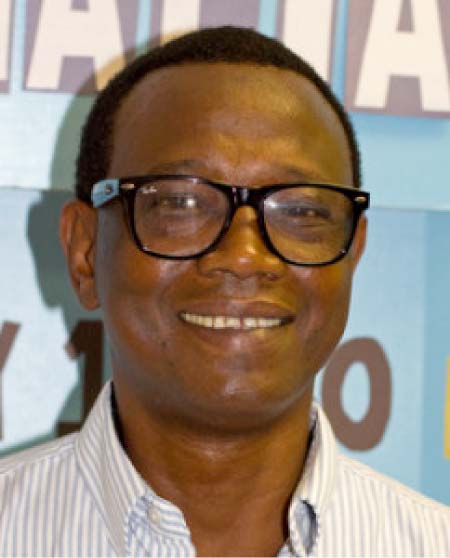
Transitional Justice may be defined as the totality of processes and mechanisms designed to assist societies deal with a painful past of human rights violations, authoritarianism or conflict, to craft a present and future of respect for human rights, human dignities and the rule of law, and to help prevent a recurrence of past human rights violations.Theyoften mark periods of transition and invariably include looking at the past for the truth of what happened, gathering evidence, and ultimately making recommendations designed to correct the wrongs of the past through regimes of reconciliation, healing, reparations, criminalprosecutions, and administrative, institutional andother reforms and initiatives that would address the policy failures and gaffes that contributed to the emergence of a culture of impunity and rights violations.
The ultimate aim of any transitional justice process should be to bring about a certain level of transformation in society. Societies emerging from authoritarianism of conflict, or that experienced a period of human rights violations recognize that some things were fundamentally wrong or dysfunctional in their recent pasts, and that those things needed to be corrected so that society may be transformed to a better version of itself and so that such wrongs may not recur in the future. Thus, all transitional justice mechanisms first embark on research and investigation of what went wrong, how and why it went wrong, and subsequently draw from the evidence gathered to make recommendations for corrective measures that need to be taken to ensure a better future.
Truth commissions are the quintessential transitional justice mechanism. While there may be other important mechanisms involved in the work of looking at the past in order to recommend corrective action, truth commissions mainly focus on investigating widespread human rights violations, promoting healing, reconciliation and the payment of reparations, and making recommendations for criminal prosecution of perpetrators, as well as recommendations for administrative, institutional and policy reforms that would have transformative effects on society. Their essential characteristics include the fact that their mandate periods are clearly delineated and their periods of existence limited to a number of months or years, after which they cease to exist.
The work of truth commissions is generally divided into two main phases, namely the truth-seeking phase and the implementation phase. The truth commission operates as a functional entity during the truth-seeking phase. It ceases to exist as an entity once its final report and recommendations are submitted to the establishing authority, which marks the beginning of the implementation phase of its work. In general, the truth-seeking phase is relatively uncomplicated, depending on the context and the environment in which the truth commission operates. Research and investigations are conducted into the past in question, evidence is gathered, and final reports containing recommendations are written and submitted to the establishing authority. However, the implementation phase of a truth commission’s work is generally acknowledged to be rife with controversies and complications. These complications often result from a lack of political will or the of capacity to implement recommendations, some of which could run counter to the vested interests of the establishing authority, or be perceived as threats to the maintenance of peace and stability in society.
These difficulties of implementation have meant that historically, in many cases, truth commissions have not been able to have any significant transformative effects on society. In some cases, their final reports are made public and promises of implementation are made, but little of substance in terms of follow-up are done. In a few cases, their reports are not made public at all and public demands for implementation are ignored. There have been cases where efforts at implementation are made and some success registered in this regard. In general however, little transformative changes are registered in the societies in question and the threats of recurrence or “a return to the past” remain visible during the post-truth commission periods.
A look at the history of truth commissions reveals that a common but not so recognized explanation for the failure of truth commissions’ transformative potential resides in their institutional structures and modes of operation. Most truth commissions are built and their work is centered on the “commission” itself – the group of eminent persons, headed by a chair, entrusted with conducting the investigations and submitting a final report to the establishing authority. The number of commissioners could range from three to over thirty persons, generally of impeccable character and sterling public credentials. These commissioners are often supported in their work by a skeletal secretariat staff composed of an executive secretary, researchers, investigators and statement taking assistants. Most of the research, investigation, statement-taking and listening to witness testimonies is done by the commissioners. The result of this model of “commissioner-centered” truth commissions is that a lot of the work required to render the truth commission process effectively transformative cannot be done by the commissioners alone. And even in the many cases in which these “commissioner-centered” truth commissions do a brilliant and thorough job of executing their mandates and submitting excellent reports, the transformative effects of their work remain at best, minimal and at worst, non-existent.
Perhaps too, these “commissioner-centered” truth commissions were not necessarily conceived as agents of transformative transitional justice. It seems they were merely designed to conduct investigations and write reports containing recommendations that would help correct the wrongs of the past through reconciliation and healing, the payment of reparations, criminal prosecutions, and institutional, legal and policy reforms to help prevent recurrence. And in the event that their recommendations are not implemented, or are only partially implemented, their transformative effects on the society would remain negligible.
It was an early recognition of these pitfalls of previous truth commissions that made it possible for The Gambia’s Truth, Reconciliation and Reparations Commission (TRRC) to develop an institutional structure, operational procedures, and strategic communication plan that rendered it among the world’s if not the world’s most transformative transitional justice process so far. In the next session, we will examine this aspect of the TRRC’s work in greater detail.
Note: The author is former Executive Secretary of The Gambia’s TRRC



